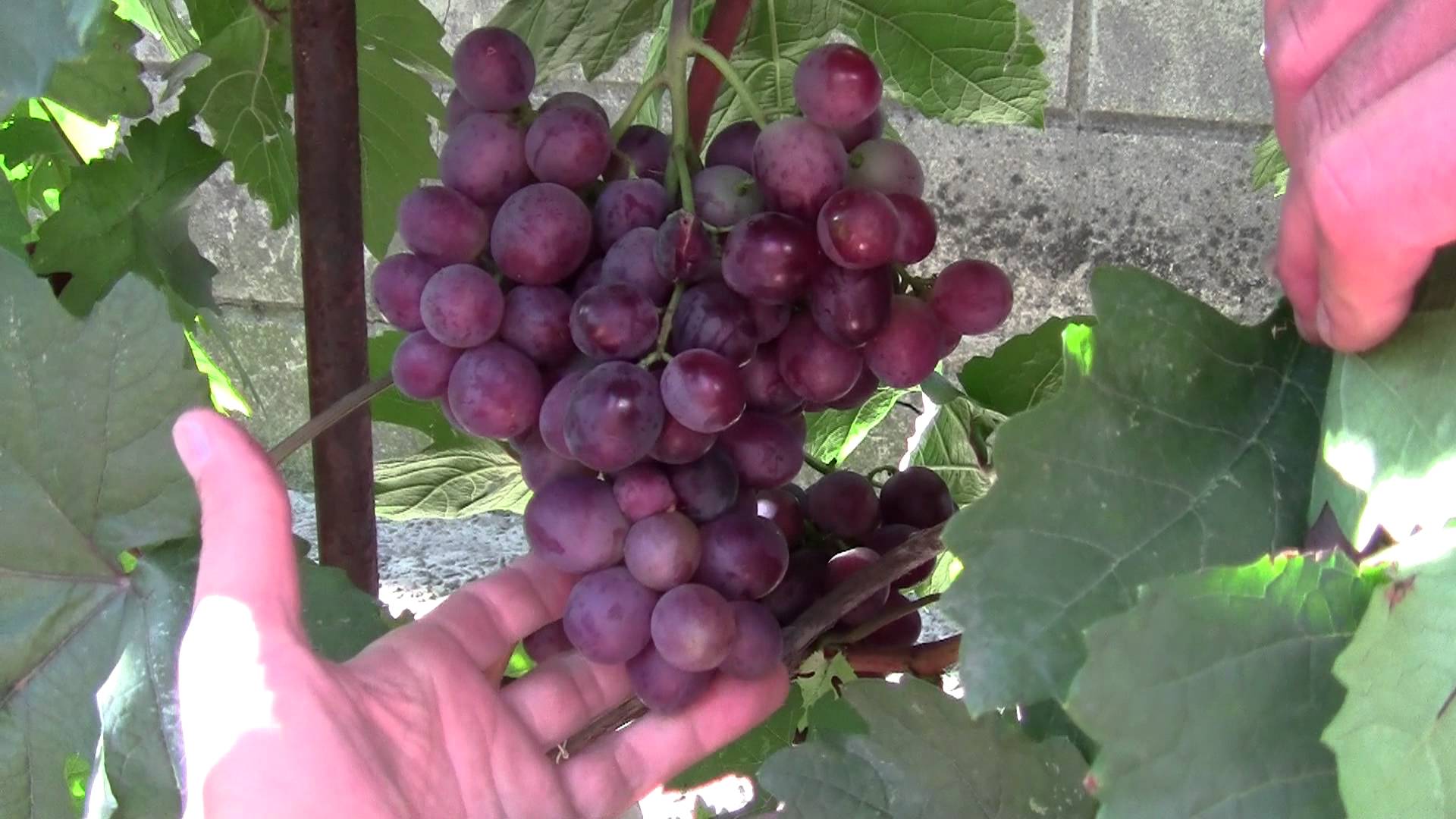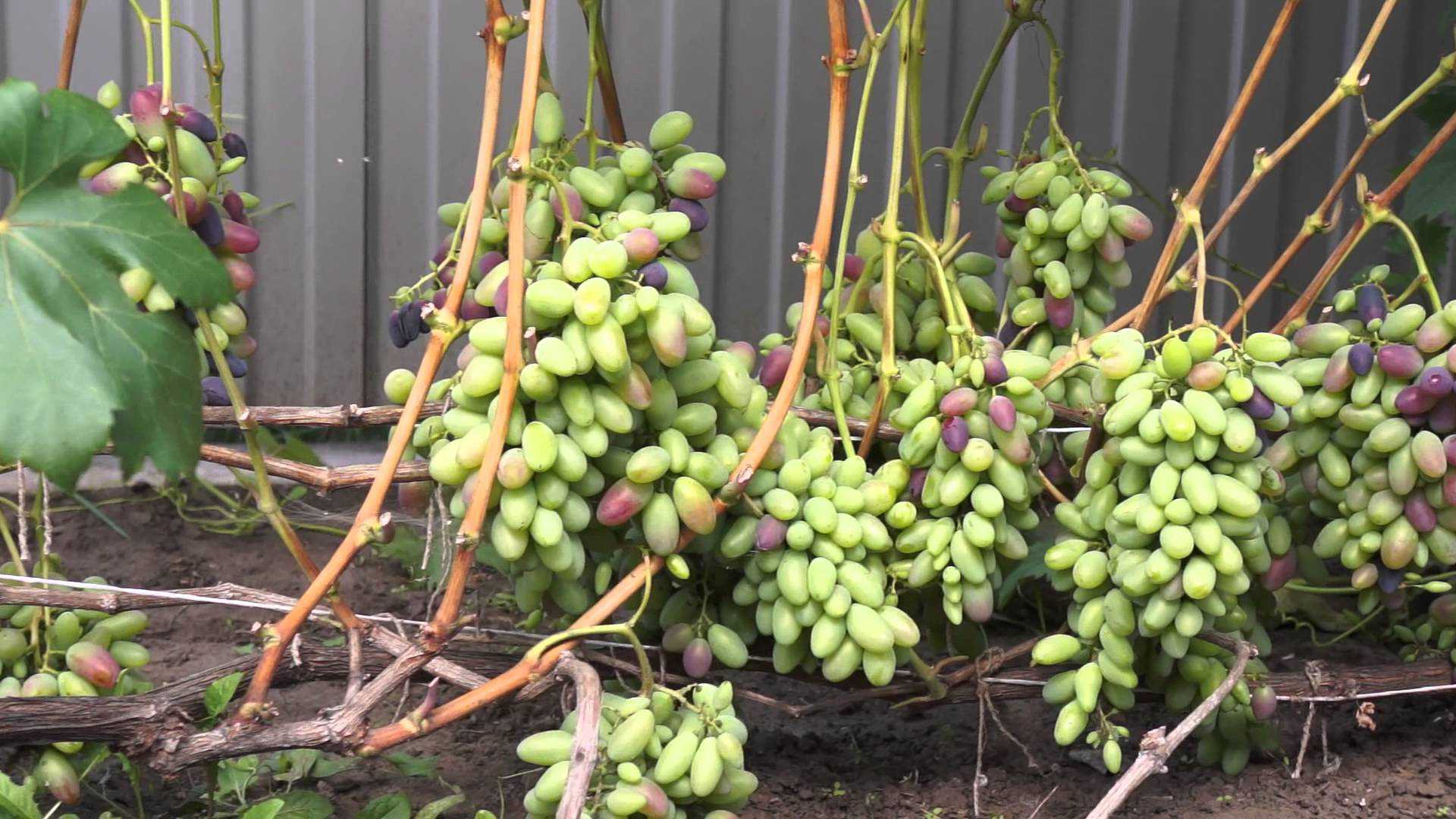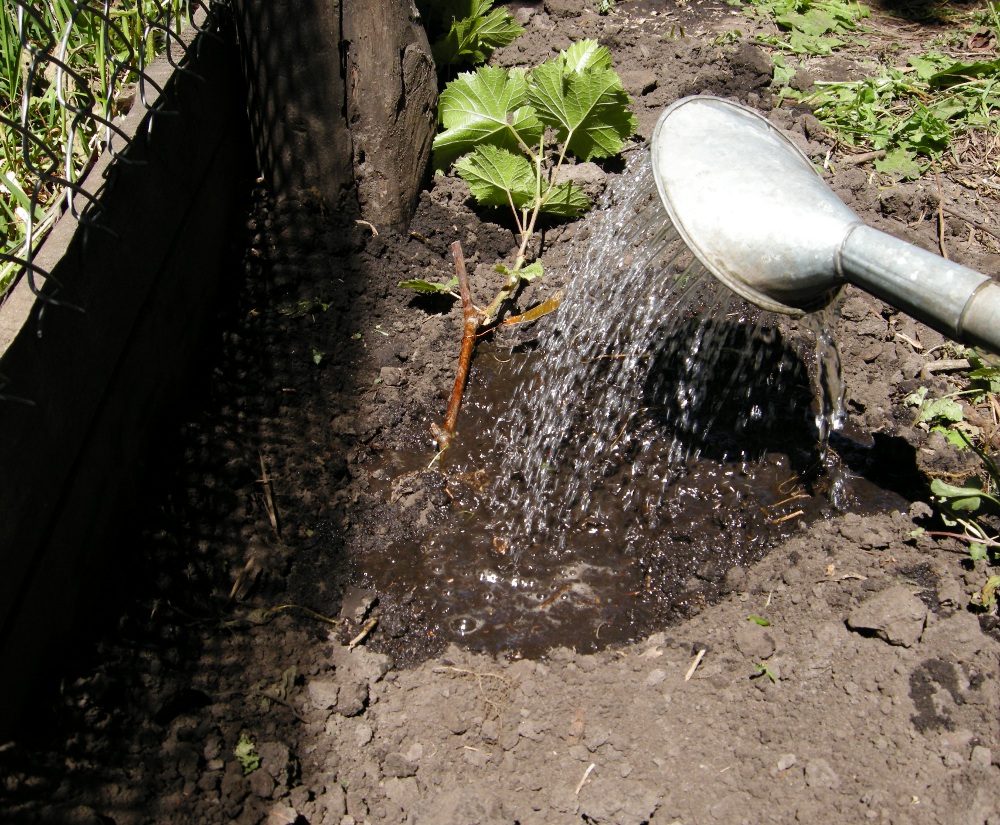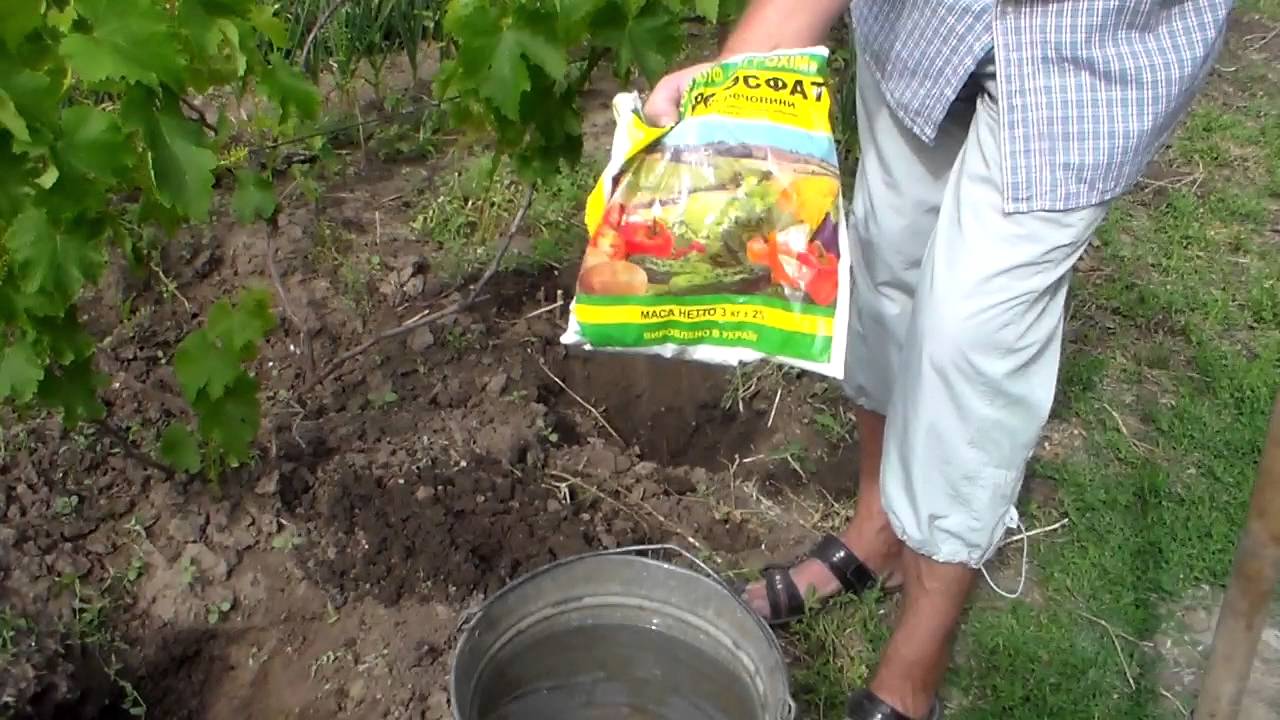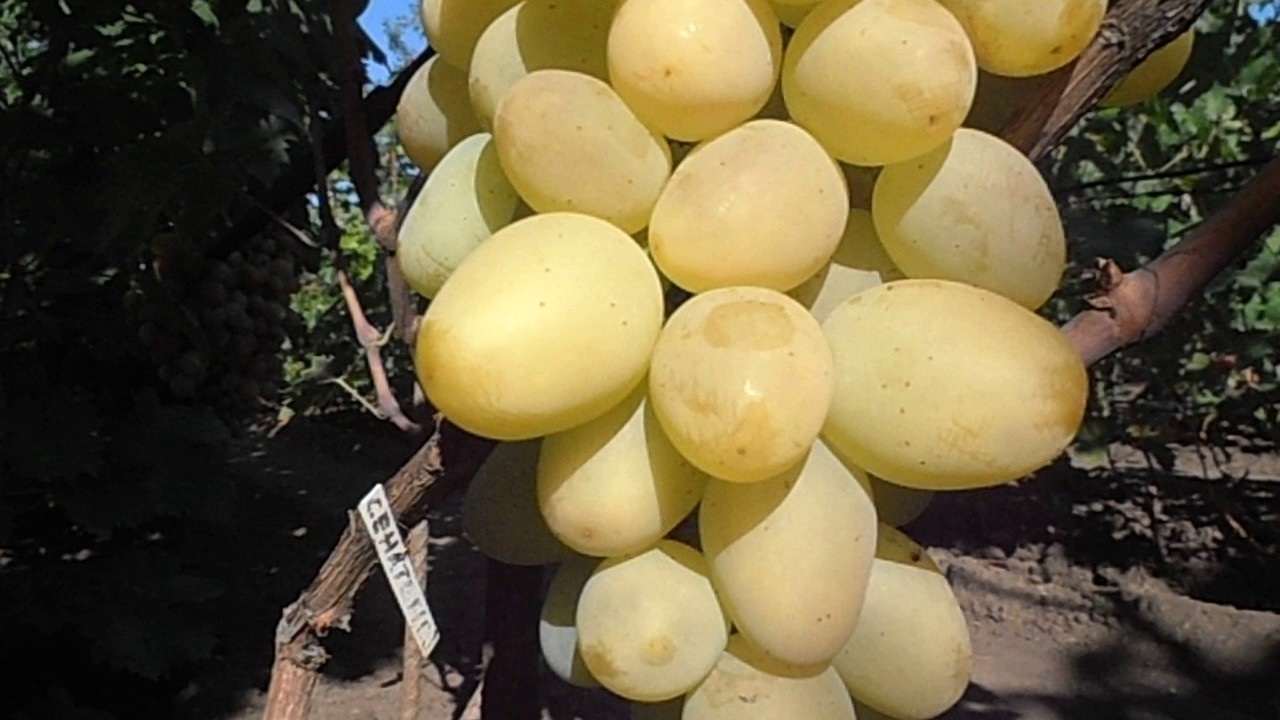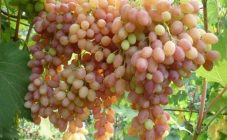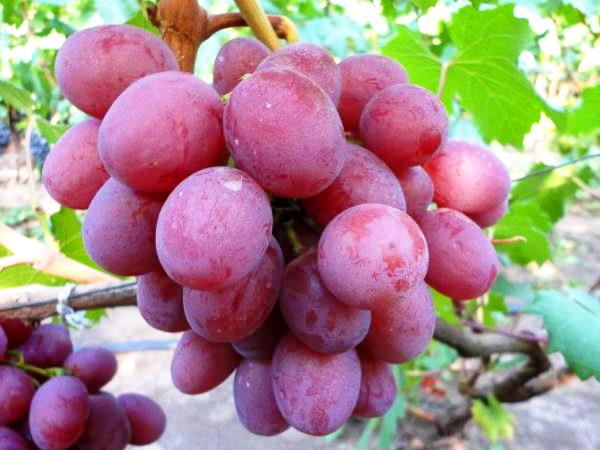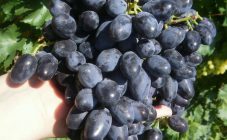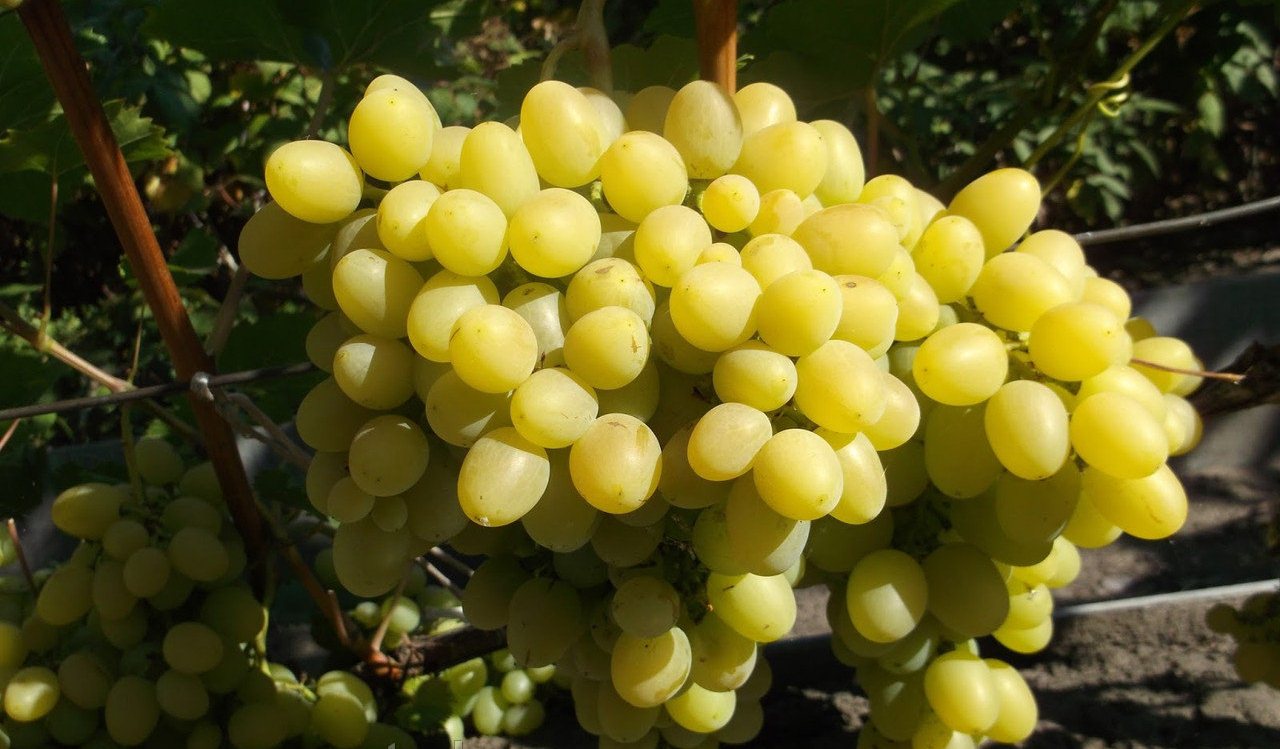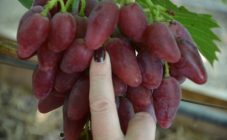Content:
Grapes are a unique tasty, healthy, beautiful berry that is loved by both adults and children. Grapes can be eaten raw, dried (raisins), juice is made from it, oil is obtained from seeds, wine, cognac, and vinegar are made from juice. There are a great many different varieties, one of the famous and worthy is the Senator grape.
Two varieties of Senator grapes were bred. The first was created by E.G. Pavlovsky from the city of Novoshakhtinsk. The second variety was bred by A.V. Burdak in the Dnepropetrovsk region. Both varieties are hybrids and were bred at different times by crossing different varieties. The resulting varieties are of approximately the same taste and quality, with slight differences.
Grape Senator Pavlovsky: description
It turned out when crossing the varieties Gift of Zaporizhia and Maradona. Senator grapes have an oval shape, weight 12-15 g. Color - from pink to red with purple hints. The berries are collected in a beautiful bunch of up to 1.5 kg. Grapes with a rich nutmeg taste have juicy fleshy pulp. The peel on the berry, although thin, is very strong, due to which the variety is considered transportable.
The ripening period of berries depends on the region of growth of this hybrid. For the southern regions, the growing season will be about 125 days, and for regions with cooler climates, it can increase by two to three weeks.
Many winegrowers, especially winemakers, opt for this variety. Having tasted its berry once, it is impossible to forget this taste. And he requires minimal care, unlike his fellows.
Cuttings of this variety root well, quickly growing into a strong, powerful bush, which, although it branches little, produces a large crown.
The Senator's leaves are large, carved, and have distinct green veins. The flowers are bisexual, so they do not need additional pollination.
Evgeny Georgievich wanted the variety to have increased immunity to disease and not be afraid of the cold. And he succeeded: the vine can withstand cold temperatures up to -24 degrees. But still, in order to avoid freezing in the winter, the vine should be covered.
Senator - Grapes are not very disease resistant.
Planting and grooming in the first year
In the first ten days of March, after checking the condition of the grape cuttings, you need to germinate them in order to later plant them on seedlings.
For this:
- Pour water about 2 cm into the container;
- To speed up the process of root formation, cut the cuttings should be filled with paraffin or wax;
- Dip the prepared cuttings into a container and leave for 15-20 days;
- Monitor the water level; when it evaporates, it must be refilled. If you pour more water, you get leaves on the handle, not roots.
- When the roots appear and grow to about 0.5 cm, the seedling must be transplanted into the ground (2 parts of soil or humus, 1 part of sand);
- You can grow a cutting for seedlings in any container, but a drainage hole is a prerequisite so that water does not stagnate in the ground;
- Watering should be done as the soil dries up.
This grape variety grows best on the southern or southwestern slopes. The soil prefers light, fertile, well warmed up. Pavlovsky shared some tips:
- The trench should be cut in the fall;
- The distance between the bushes should be at least one and a half meters;
- At the bottom of the trench, it is imperative to put drainage, on it - ash and phosphorus fertilizers, then a layer of earth;
- Carefully take out a watered seedling and plant in prepared soil;
- Water the plants abundantly with water (about two buckets per plant).
The growth and development of the vineyard must be carefully monitored:
- Be sure to mulch the ground around the young vine. Straw, leaves, seed husks and other organic matter can act as mulch. Mulch will prevent the soil from drying out and keep weeds out;
- You need to form a bush. To do this, extra shoots must be removed, leaving no more than two, which must be tied up;
- Water the seedlings regularly, avoiding either drying out of the soil or waterlogging. Fertilizers must be applied along with watering. From organics, infusion of mullein or poultry droppings are best suited, their mineral fertilizers containing potassium, nitrogen and phosphorus.
- In order to avoid diseases with odium, mildew, mites and gray rot, preventive spraying should be performed;
- For the winter, the seedling must be covered.
If everything is done correctly in the first year, then in the second year it will be possible to get the first, test crop.
Care in the second year
- All extra buds are removed, you need to leave three on each shoot;
- Garter plants and their shoots throughout the summer;
- Remove all unnecessary shoots and stepsons;
- As soon as the grapes bloom, all the shoots must be pinched;
- Before flowering, the bush needs to be processed and fed;
- Extra bunches are removed, one or two are left for each shoot;
- Harvest the first crop.
Post-harvest processing
Before wintering, the vine again needs to be fertilized, treated against pests and diseases, as well as cut off excess shoots. Shelter for the winter from frost.
If the grapes are properly looked after, fertilized, watered, cut on time, it will delight you with its juicy sweet berries for many years.
Senator Burdak
Alexander Vasilyevich Burdak bred his own variety by crossing the Talisman and Arcadia varieties. In terms of his qualities, he is about the same as Senator Pavlovsky:
- The bush forms an extensive crown in the same way;
- Brushes of the same weight;
- Also has good frost resistance;
- Muscat flavor;
- The same portability.
The difference is that the berries are amber-yellow in color and more rounded, sweeter than the grapes of Senator Pavlovsky. Comparing again with his namesake, we can say that the fruiting of Senator Burdak comes two weeks earlier.
Recently, gardeners engaged in viticulture are increasingly attracted by the Grape Senator, the hybrid is simply ideal in all respects:
- Ease of care;
- Fast aging;
- Great taste;
- Frost resistance;
- Good transportability.
The cons of both varieties are also the same:
- Due to the high humidity, the berries crack;
- The impossibility of growing in the northern regions.
Both varietal namesake are relatively young, but they have already loudly declared their superiority.
